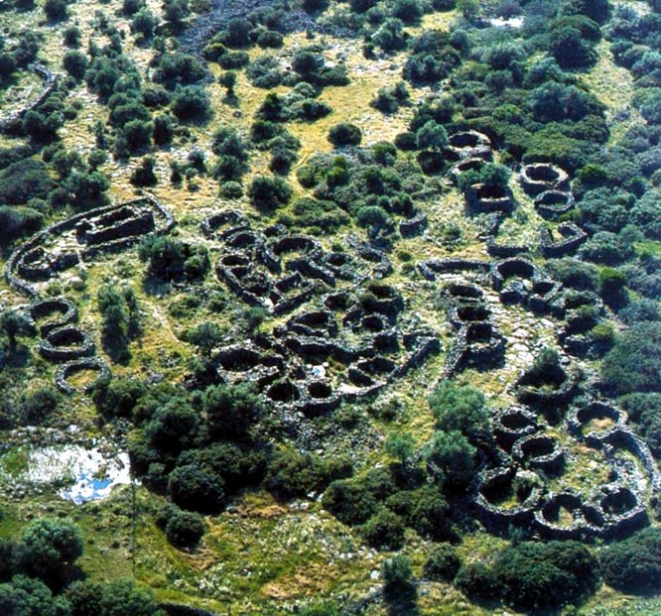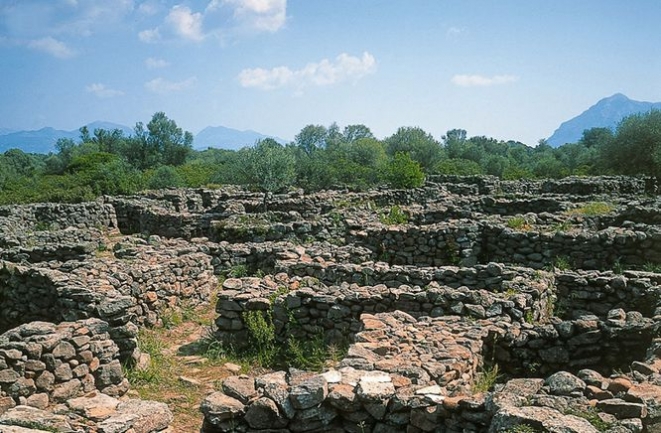The Tomb of the Giants s'Ena 'e Thomes
The funerary monument symbol of the nuragic history
In Dorgali, close to the famous archaeological nuragic site of Serra Orrios stands, between the Mediterranean flora, the best preserved nuragic obelisk during the multimillenial history of Sardinia, the tomb of the giants s' Ena 'e Thomes. The magnificent location overlooking the fertile valley of the river Isalle, emphasizes the majesty of one of the most fascinating and intriguing burial structures of the Middle Ancient Bronze (1800-1600 B.C.).
The tomb of the giants s' Ena 'e Thomes is, in fact, one of the oldest of the existing ones in the island territory. It is characterized by the presence of a central stele, that is a single granite monolith more than three and a half meters tall, well-finished in the edges and with a small gateway down.

The oval stele of about seven tons closes the burial chamber slab, which although dated remains in its original structural formation: lintels covered, that is, formed by stone slabs resting horizontally on the side walls.
The dolmen type funerary structure has a large exedra (so named the area dedicated to the cult) of about ten meters in relation to the sides of the entrance, and composed by the lower stones, arranged in a semicircle respect to the central stele.
The singular significance of the tomb of Dorgali is its plausible persistence into the intact original structure and in the astronomical direction it pursues.
The Tombs of the giants have a cyclopic formation, the same used to build the nuraghes from which they differ because they consist in tombs with an apse rectangular plan, having their own astronomical orientation.
The exedra of most of the tombs of the giants is facing south-east, that is towards the direction of dawn on the winter solstice; or eastward, perhaps about the rising of the sun during the equinoxes.

The tomb of Dorgali differs, in that sense, to a different projection of its worship area, which is oriented to the south. The extraordinary nature of the archaeological area does not culminate here.
The research of three scientists of the National Institute of Astrophysics of the Observatory of Brera (L.Marchisio, A.Manara, A.Gaspani) highlighted that the astronomical azimuth orientation of the tomb is the same of the Tomb of the giants of Goronna (Oristano) and of the Tomb of the giants of Baddu Pirastru (Sassari).
The constellation to which the three graves are oriented would be Taurus, specifically toward the star Aldebaran. In relation to this, it denotes that the plan of the building is similar to the head of a bovine whose horns are identified in the semicircular wall and evocative of image of the Bull God, that Nuragic venerated together with the Mother Goddess.
The assumptions about the argument contrasts on several fronts and skepticism about the original nature of the archaeological structures tombs remain, dedicated to the collective burials from the very primitive times.